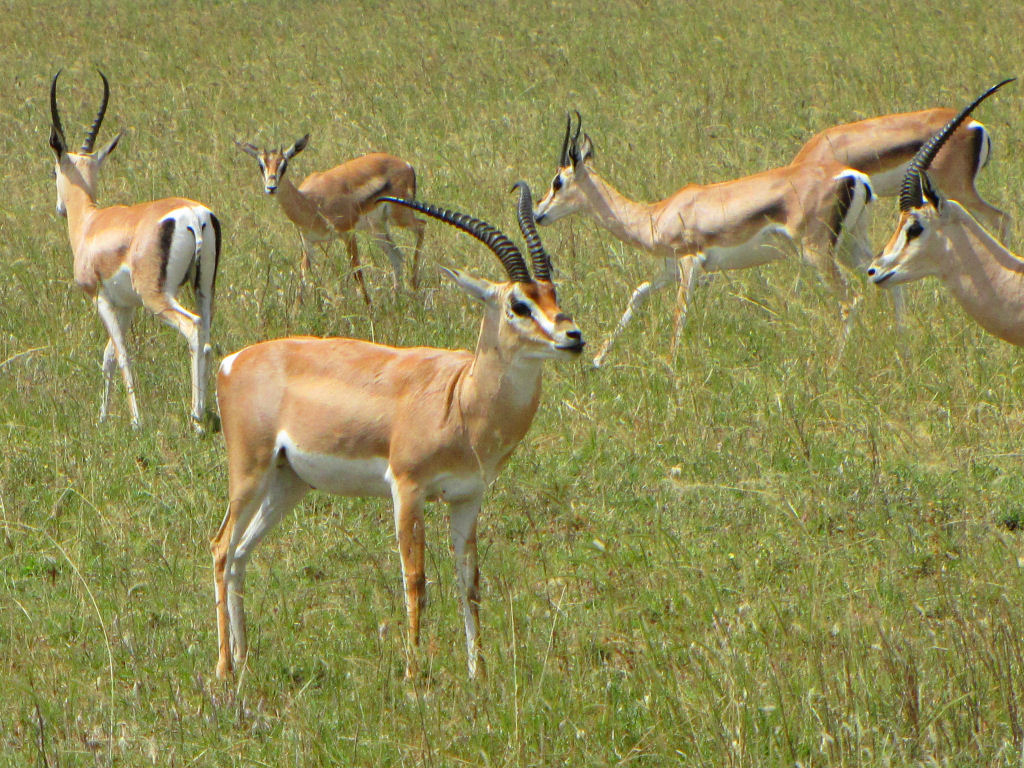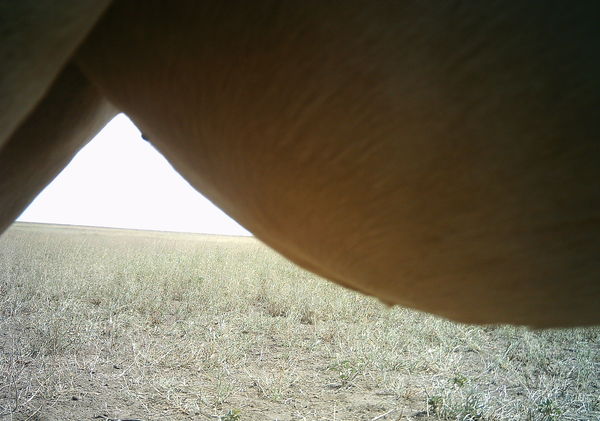Female Grant's antelopes
-
 by
dms246
moderator
by
dms246
moderator
Ummmm..... did you intend to attach a photo, chipo? Seems to have got lost somewhere I'm afraid...
Posted
-
 by
chipo
by
chipo
I got totally confused with this post but couldn;t delete it anymore. I mean, I deleted the contents but the title remained.
Sorry about that.
What I meant to aks is, the example-pictures (on the classifying page ofcourse) which show Grant's gazelles, all 3 show gazelles with horns. But in the definition it says: "adult males have long, ridged horns that widen towards their tips." So I assume the females do not have horns. I meant to ask could we have an example picture of a female Grant's gazelle because I don;t want to confuse them with Impala's.
I hope I am explaining myself clearly, I am dutch, so sometimes writing english is confusing.Posted
-
 by
kosmala
scientist
by
kosmala
scientist
The females do have horns, but they're smaller than the males' and can range from little stubs to longer horns. In this image you can see the heads of 3 males and 2 females to get an idea of the variation.
 (Hmm... I'm having problems inserting images into this post... click through instead: Grant's Gazelles)
(Hmm... I'm having problems inserting images into this post... click through instead: Grant's Gazelles)Posted
-
 by
chipo
by
chipo
Okay, thanks for clarifying that one!
Posted
-
 by
kosmala
scientist
by
kosmala
scientist
Here we go:

Posted
-
 by
dms246
moderator
by
dms246
moderator
Great picture! Thanks kosmala!
@chipo : here are some things I've noticed, that can help when deciding if you're looking at an impala, a Grant's gazelle or a Thomson's gazelle:
Thomson's : dark streak on face running up to each eye, but ending at or just below the eye.
Grant's : dark streak on face running up to each eye, and extending above and beyond the eye. Often looks like a diamond shape painted around the eye.
Impala : no dark streak on face.
Impala : distinct black tip on each ear. Black "ankle socks" on the hind legs. Sometimes a black spot on the point of the main joint in the hind legs. None of these is present in either of the two gazelle.
Impala : noticeable black patch in the "pocket" formed where the thigh joins onto the belly. Not present in either of the gazelle.
Impala : white on belly doesn't come so far up onto the animal's side as it does on the gazelle. The lighter strip is next, rather than being higher up the animal's side, and is more horizontal than it tends to be on the gazelle.
Grant's : white on rump extends up above the tail, and curls round onto the animal's flank in a small "wing" on each side, which is usually visible in a side view. Neither the Thomson's gazelle nor the impala have those distinctive white "wings", or the white above the tail.
Hope those help! 😃
Posted
-
 by
chipo
by
chipo
So this woul be a proud Impala mom, with kid !(http://talk.snapshotserengeti.org/#/subjects/ASG000f8vp)
Posted
-
 by
dms246
moderator
by
dms246
moderator
Yep! A lovely photo, too - haven't seen any young impalas until now. 😃
Posted
-
 by
chipo
in response to dms246's comment.
by
chipo
in response to dms246's comment.
I see someone else found this one (http://talk.snapshotserengeti.org/#/subjects/ASG000bywb)
Posted
-
 by
dms246
moderator
by
dms246
moderator
Ohhhh... sweet!
Posted
-
 by
chipo
by
chipo
By now I also have noticed that the impala's are often found near the tree/bushy spots and the Grant's and Thomson's more on the plains. I don;t know whether this is coincidence or has maybe to do with their preferred food or surroundings?
Posted
-
 by
DeborahV
by
DeborahV
Does anyone have any advice for ID'ing close ups of an antelope's "under carriage" - i.e., pics of their stomachs, private parts, etc. I know I'm probably not ID'ing them correctly when they're standing close to the camera. I've had several of these and find it very confusing in terms of the color being the same vs. being white or striations of colors like the gazelles or impalas. I generally have gone with Topi's or Hartebeest's. Could use some advice!
Example:

Posted
-
 by
schaep
by
schaep
this is a hartebeest, seen lots of it like it.
Posted
-
 by
dms246
moderator
in response to DeborahV's comment.
by
dms246
moderator
in response to DeborahV's comment.
Hi DeborahV - there isn't really any sure way of ID'ing photos like this. It really just comes down to trying to judge the height off the ground, and looking at colouring and general shape and proportion. Then once you've looked at a fair number of photos, you can add in your own experience in terms of which animals tend to show up more. Like @schaep I'd probably go for hartebeest on this particular photo - the colour and size are about right, and the fact is we see a lot of hartebeest standing up close to the camera in this fashion. The camera looks like it's at least 2-3 feet off the ground, so if this was a gazelle, you'd be seeing the head and back, rather than the belly. Sometimes you get a glimpse of tail which can help loads in ID'ing the animal. Bottom line, though, is simply to make your best guess based on the info available to you.
Posted
-
 by
DeborahV
in response to dms246's comment.
by
DeborahV
in response to dms246's comment.
Thanks for clarifying. I think I can tell a wildebeest in my sleep, but sometimes these "tan" animals have me getting a lot of neck exercise as I view them one way and another way!
Posted